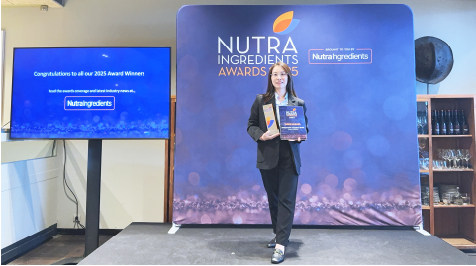Industry Insights
Home > News > Industry Insight > Antimicrobial Activity of Lactic Acid Beverage Beverage Strain and Its Application in Food Industry
Antimicrobial Activity of Lactic Acid Beverage Beverage Strain and Its Application in Food Industry
Welcome to our blog post on the fascinating world of lactic acid fermentation and its antimicrobial activity! Have you ever wondered how certain foods stay fresh for longer periods? Or how they acquire that unique tangy taste? Well, the secret lies in the power of lactic acid bacteria. These tiny superheroes play a significant role in preserving food and keeping harmful microbes at bay.
In this article, we will delve into the benefits of lactic acid fermentation, explore its applications in the food industry, and discover some exciting strains that possess exceptional antimicrobial properties. So grab your favorite beverage (maybe even a lactic acid-based one!) and join us as we uncover the wonders of this microbial marvel. Let's get started!
Lactic acid bacteria and their antimicrobial activity
Lactic acid bacteria, also known as LAB, are a diverse group of microorganisms that play a crucial role in food fermentation. They thrive in various environments and can be found in dairy products, vegetables, fruits, and even the human body. But what makes them truly remarkable is their ability to produce lactic acid through fermentation.
The antimicrobial activity of lactic acid bacteria is one of their most valuable traits. When these bacteria ferment sugars present in food, they create an acidic environment that inhibits the growth of harmful pathogens such as Salmonella and E.coli. This natural defense mechanism helps to extend the shelf life of foods while ensuring they remain safe for consumption.
Not only do lactic acid bacteria prevent spoilage caused by pathogenic microbes, but they also inhibit the growth of other undesirable organisms like yeasts and molds. By producing antimicrobial substances such as bacteriocins and organic acids during fermentation, LAB effectively suppresses the proliferation of these unwanted invaders.
In addition to their direct antimicrobial effects, lactic acid bacteria indirectly contribute to food safety by enhancing the immune system's response against infections. Some strains have been shown to stimulate the production of antibodies and cytokines which help strengthen our body's defenses against harmful pathogens.
Moreover, research has revealed that certain strains of lactic acid bacteria exhibit broad-spectrum antimicrobial activity beyond just inhibiting specific pathogens. These powerful strains possess unique abilities to combat multiple types of microorganisms simultaneously - making them highly desirable for use in various applications within the food industry.
Understanding how lactic acid bacteria exert their antimicrobial activity opens up new possibilities for improving food preservation methods naturally without relying on artificial preservatives or chemicals additives. Harnessing this microbial power can lead us towards safer and more sustainable ways to ensure freshness while maintaining nutritional quality in our favorite foods!
The benefits of lactic acid fermentation
Lactic acid fermentation, also known as lacto-fermentation, is a process that has been used for centuries to preserve food and enhance its flavor. It involves the conversion of carbohydrates into lactic acid by lactic acid bacteria (LAB). But beyond preservation, there are numerous benefits to this ancient technique.
One of the key advantages of lactic acid fermentation is its ability to increase the nutritional value of food. LAB produce enzymes that break down complex molecules into more easily digestible forms, making nutrients more accessible to our bodies. This can result in higher levels of vitamins, minerals, and antioxidants in fermented foods compared to their raw counterparts.
Furthermore, lactic acid fermentation improves gut health by promoting the growth of beneficial bacteria in our digestive system. The lactic acid produced during fermentation creates an acidic environment that inhibits the growth of harmful pathogens while providing a comfortable habitat for probiotics.
In addition to these health benefits, lacto-fermented foods often boast unique and delicious flavors. The tangy notes imparted by lactic acid give fermented products like sauerkraut and kimchi their distinctive taste profile. These flavors can add depth and complexity to dishes or be enjoyed on their own as condiments or snacks.
What's more, lactic acid fermentation offers a sustainable approach to food preservation since it eliminates the need for artificial additives or high-energy processes like canning or freezing. By harnessing natural microorganisms already present in foods or those introduced through starter cultures, we can extend shelf life without compromising quality or safety.
With all these advantages at hand, it's no wonder why lactic acid fermentation has stood the test of time! Its ability to enhance nutrition while creating incredible flavors makes it not just a traditional practice but also a valuable technique embraced by both home cooks and professionals alike. So next time you reach for that jar of pickles or enjoy some tangy yogurt, take a moment to appreciate the wonders of lactic acid fermentation.
The food industry applications of lactic acid fermentation
Lactic acid fermentation, carried out by lactic acid bacteria (LAB), has a wide range of applications in the food industry. This traditional preservation technique not only enhances the flavor and texture but also improves the shelf life of various food products.
One common application is in dairy products like yogurt and cheese. LAB play a crucial role in fermenting milk sugars to produce lactic acid, which gives these products their characteristic tangy taste and creamy texture. Additionally, lactic acid helps prevent spoilage by creating an acidic environment that inhibits the growth of harmful bacteria.
Another significant use of lactic acid fermentation is seen in fermented vegetables such as sauerkraut and pickles. LAB naturally present on raw vegetables convert carbohydrates into lactic acid, giving these dishes their unique sour taste while preserving them for longer periods.
Furthermore, lactic acid fermentation can be applied to meat products as well. The process contributes to better tenderness and flavor development while reducing microbial spoilage during storage.
In recent years, there has been growing interest in using LAB for functional foods too. LAB strains have been studied for their potential probiotic effects on gut health when consumed regularly.
With its versatility and numerous benefits, it's no wonder that lactic acid fermentation continues to be widely used across various sectors of the food industry. Whether it's enhancing flavors or improving safety standards, this ancient technique remains an invaluable tool for creating high-quality food products that we all enjoy today!
Lactic acid beverage strains with the highest antimicrobial activity
Lactic acid beverage strains play a crucial role in the food industry due to their antimicrobial activity. These strains have been found to exhibit high levels of effectiveness against various harmful microorganisms, making them ideal for use in ensuring the safety and quality of food products.
One such strain with exceptional antimicrobial activity is Lactobacillus plantarum. This particular strain has been extensively studied and proven to possess strong inhibitory effects against a wide range of pathogenic bacteria, including Salmonella, Escherichia coli, and Staphylococcus aureus. Its ability to produce organic acids like lactic acid creates an acidic environment that hinders the growth and survival of these harmful microorganisms.
Another noteworthy lactic acid beverage strain is Bifidobacterium animalis subsp. lactis. Research has shown that this strain exhibits potent antimicrobial properties against common foodborne pathogens such as Listeria monocytogenes and Campylobacter jejuni. Moreover, it also demonstrates resistance to bile salts and low pH conditions, making it highly suitable for probiotic applications in fermented foods.
In addition to these strains, other lactic acid beverage strains like Streptococcus thermophilus have also demonstrated significant antimicrobial activity. They are capable of producing bacteriocins – proteinaceous compounds that inhibit the growth of competing bacteria – further enhancing their potential in preserving food quality.
The high antimicrobial activity exhibited by these lactic acid beverage strains makes them valuable assets in the food industry. By incorporating these strains into various food products through fermentation processes, manufacturers can effectively extend shelf life while ensuring safety standards are met.
It's important for researchers and scientists to continue exploring new lactic acid beverage strains with even higher levels of antimicrobial activity. This ongoing research will contribute significantly towards improving microbial control strategies within the food industry ultimately benefiting both producers and consumers alike
Conclusion
Lactic acid fermentation, performed by lactic acid bacteria, holds immense potential in the field of food preservation and safety. The antimicrobial activity exhibited by these strains has been proven to effectively inhibit the growth of harmful microorganisms.
Through the process of lactic acid fermentation, various benefits are obtained. Not only does it enhance the shelf life and nutritional value of food products, but it also contributes to their unique flavors and textures. This natural preservation method is a safe and sustainable alternative to chemical additives.
The food industry has embraced lactic acid fermentation for its numerous applications. From dairy products like yogurt and cheese to fermented vegetables like sauerkraut and kimchi, this technique is widely used across different sectors. Its ability to control microbial growth ensures that consumers receive safe and high-quality products.
Amongst the multitude of lactic acid beverage strains available, some exhibit higher levels of antimicrobial activity than others. These strains prove to be particularly effective in inhibiting pathogenic bacteria such as E.coli or Salmonella spp., making them valuable assets in ensuring food safety.
In conclusion (without using those words), lactic acid fermentation offers a natural solution for preserving foods while enhancing their taste profile. With its proven antimicrobial properties, it serves as a powerful tool in maintaining food safety standards within the industry. By harnessing the potential of specific lactic acid beverage strains with high antimicrobial activity, manufacturers can produce safer products without compromising on quality or flavor.
Embracing this age-old technique not only benefits our health but also contributes towards building a more sustainable future for our food industry.









 Leave a Message
Leave a Message Email
Email Linkedin
Linkedin